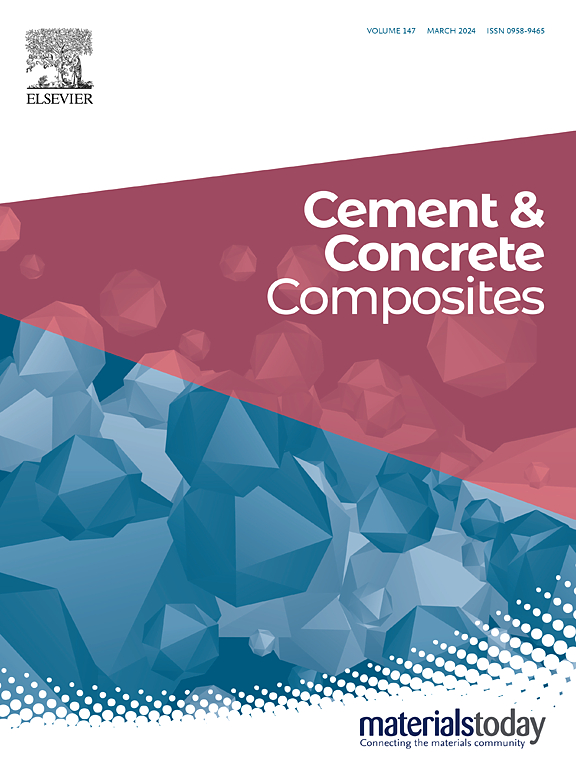利用废弃卤水产生的污泥作为补充胶凝材料,增强了碳化能力
IF 10.8
1区 工程技术
Q1 CONSTRUCTION & BUILDING TECHNOLOGY
引用次数: 0
摘要
通过一种新的两步沉淀法和过滤法从废盐水中获得的污泥被用作活性镁水泥(RMC)和硅酸盐水泥(PC)混合物的补充材料。对水泥浆的性能和微观结构进行了详细的评估,揭示了其潜在的机理。在RMC混合物中加入25%(粘结剂含量)的污泥显著提高了环境和碳基固化的抗压强度,后者的抗压强度增加了一倍以上。随着污泥的使用,PC混合料的强度有所下降,但碳化后强度仍超过30 MPa。在含污泥混合物中观察到的水化热的增加归因于水镁石作为成核位点的存在。通过在设计的混合物中简单地加入污泥,二氧化碳排放量减少了30%,能耗减少了25%。此外,污泥增强了RMC和PC混合物中的碳化作用,使28天的CO2固存量分别增加了25.9%和41.1%。总体而言,通过直接使用产生的污泥来重新利用废弃盐水的可行性得到了证明,这为混凝土生产提供了一种可持续的替代方案,同时显著减少了对环境的影响。本文章由计算机程序翻译,如有差异,请以英文原文为准。
Use of sludge produced from reject brine as a supplementary cementitious material with enhanced carbonation capability
Sludge obtained from reject brine via a novel two-step approach involving precipitation and filtration was used as a supplementary material in reactive magnesia cement (RMC) and Portland cement (PC) mixes. Detailed evaluation of the performance and microstructure of the resultant cement pastes revealed the underlying mechanism. Incorporating 25 % (of the binder content) sludge in RMC mixes significantly increased the compressive strength under ambient and carbonation-based curing, which was more than doubled under the latter condition. While the strength of PC mixes decreased with the use of sludge, it still exceeded 30 MPa under carbonation. Increase in hydration heat observed in sludge-containing mixes was attributed to the presence of brucite acting as nucleation sites. ∼30 % reduction in CO2 emissions and ∼25 % reduction in energy consumption was achieved by simply incorporating sludge in the designed mixes. Furthermore, sludge enhanced carbonation in RMC and PC mixes by increasing the amount of CO2 sequestered at 28 days by 25.9 % and 41.1 %, respectively. Overall, the feasibility of re-purposing reject brine by directly using the produced sludge was demonstrated, offering a sustainable alternative for concrete production with a significantly reduced environmental impact.
求助全文
通过发布文献求助,成功后即可免费获取论文全文。
去求助
来源期刊

Cement & concrete composites
工程技术-材料科学:复合
CiteScore
18.70
自引率
11.40%
发文量
459
审稿时长
65 days
期刊介绍:
Cement & concrete composites focuses on advancements in cement-concrete composite technology and the production, use, and performance of cement-based construction materials. It covers a wide range of materials, including fiber-reinforced composites, polymer composites, ferrocement, and those incorporating special aggregates or waste materials. Major themes include microstructure, material properties, testing, durability, mechanics, modeling, design, fabrication, and practical applications. The journal welcomes papers on structural behavior, field studies, repair and maintenance, serviceability, and sustainability. It aims to enhance understanding, provide a platform for unconventional materials, promote low-cost energy-saving materials, and bridge the gap between materials science, engineering, and construction. Special issues on emerging topics are also published to encourage collaboration between materials scientists, engineers, designers, and fabricators.
 求助内容:
求助内容: 应助结果提醒方式:
应助结果提醒方式:


